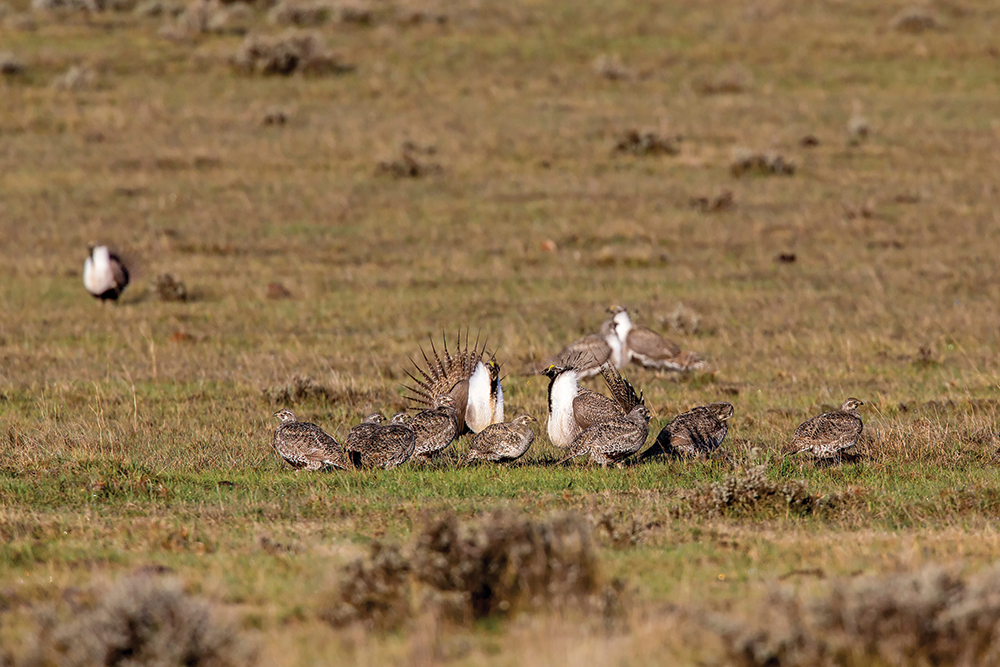Where will sagebrush restoration go from here?

It was called an “unprecedented conservation effort” and an “all-hands and all-lands” mission when federal and state agencies, private landowners, and conservation organizations across 11 Western states, including Wyoming, partnered in 2015 to make significant commitments to the daunting challenge of conserving sagebrush habitat. These vast landscapes are home to greater sage grouse, mule deer, pronghorn antelope, and more than 350 other species, and it was clear that restoring the 3-foot-high arid old-growth ecosystem would take a rare, multi-faceted cooperative effort with every type of landowner and management tool we had — and then some.
Some of the biggest threats to habitat are being addressed through collaborative efforts like the Regional Conservation Partnership Program and Partners for Fish and Wildlife Program, among others.
Between 2015 and 2019, encroaching conifer trees were removed from over 1.1 million acres, more than 4.3 million acres of invasive weeds were treated, and private landowners voluntarily enrolled over 849,000 acres of land in conservation easements to protect sagebrush habitat.
However, wildfires, more invasive weeds, a persistent Western drought, and human-related development continue to limit success and resources. The biggest questions remain: Is the plan working? Is it too soon to tell? What external factors are limiting success?
A preliminary report completed by the Greater Sage Grouse Conservation Assessment Team indicates that conservation partners rose to meet the need and fulfilled their commitments, but greater sage grouse populations are consistently trending downward. Important breeding and brood-rearing habitats have been lost to wildfires and invasive weeds, which continue to spread faster than we can exterminate them, so the amount of sagebrush treated was about the same as was lost — about 1.3 million acres of core sage grouse habitat each year.
We’ve made incredible progress, but more must be done to prevent destructive wildfires, eradicate invasive weeds, and mitigate the habitat losses caused by human population growth and development in these sensitive areas.
Hunters and other Westerners should consider this a call to action. If the sagebrush and its iconic species are to exist for the benefit of future generations, our greatest moment for cooperative conservation must be now.
Nick Dobric is the Wyoming Field Manager for Theodore Roosevelt Conservation Partnership where he works to guarantee all Americans quality places to hunt and fish. He is based out of Dubois.
























